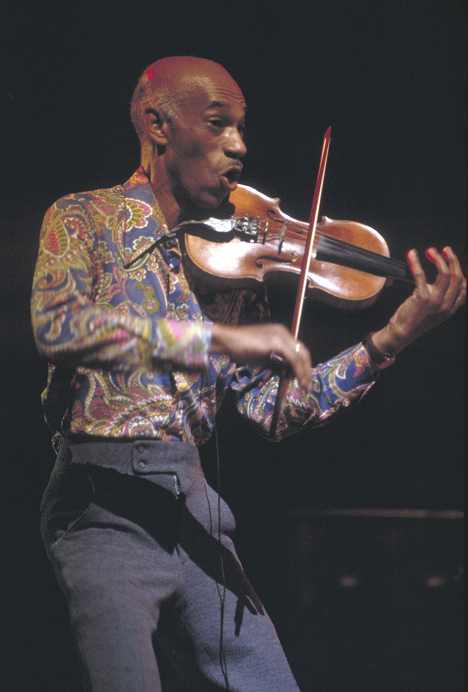Through his participation in the Jefferson Airplane and Hot Tuna, as well as his solo recordings, Papa John Creach was one of the most prominent blues violinists from the 20th century. He was equally skilled in blues, pop, rock, jazz and jazz. His playing style included a warm, rough tone and wild solo licks. In 1993, the Blues Foundation awarded Papa John the W. C. Handy award for outstanding blues musician. His most well-known tracks include “String Jet Rock”, “99 Year Blues”, “Git Fiddler”, and “Sweet Life Blues”. John Henry Creach was the fifth child in a family that included four sisters and five brothers. He was born in Beaver Falls in 1917. His musical family included members who played the piano, guitar, bass and drums. On a visit to Beaver Falls by his uncle, a merchant seaman from Europe, he brought with him a violin that he had purchased in Europe. John fell in love with the violin after hearing his uncle sing hymns. His uncle gave the violin to him and taught him how to use it. John soon learned to play the piano with his sister. After his father’s death, John’s family moved to a farm in Benton Harbor. John, then 18, moved to Chicago in 1935 with his family. He studied violin at Chicago’s Conservatory of Music. He was a competent musician and was employed by the WPA as a music librarian at the Illinois Symphony as well as an occasional guest artist. In the 1930s, however, African Americans who wanted to make a living in classical music were denied access to the industry. In an effort to make more money, he began playing jazz at Chicago clubs, and German and Polish music in dance halls. John Creach, a cabaret musician, formed Chocolate Music Bars in the 1930’s. They played blues, jazz, and popular music. They toured Canada and the United States. Later, Creach joined Roy Milton’s six-piece band in Memphis. Creach bought a National electric violin and amp in 1943, which allowed him to be heard by larger bands. Creach immigrated to Los Angeles in 1945. He performed in California cocktail lounges for the next 20 years. He was a pianist and studied classical music in a symphony workshop. He also played Jazz at night. He joined Teddy Rudolph’s trio Three Bits of Rhythm in 1950 and was part of the nightclub scene of “Cry Danger”, starring Dick Powell u0026 Rhonda Fleming. Creach, Edgar Mason, and Happy Joe Louis formed the Johnny Creach Trio in 1951. The recordings “Danny Boy”, Indian Love Call, and “My Little Susie” were released by Dootsie Williams and his Dootone label. They also recorded “Black World Blues” and the “Cotton and Corn Blues”, which were released by Helen Andrews’ Exelsior label. Creach was a part of the 1953 movie “Blue Gardenia”, which featured Nat King Cole and Nina Russell. Creach also performed with Nina Russell and Big Joe Turner during the 1950’s and 1960s. He met Joey Covington, a drummer, while looking for work at the LA Musician’s Union. Covington was a member of the Jefferson Airplane from 1970 to 1970, and introduced Creach the band. Creach was invited to appear with the plane at Winterland, October 1970. Creach was impressed by the reaction of the audience to his playing and was made a permanent member the Jefferson Airplane as well as Paul Kanter’s sideband Hot Tune. He was nicknamed Papa John by Airplane members. From 1970 to 1975, he performed and recorded with Jefferson aircraft. Creach left the Airplane in August 1975, to focus on his solo career. As a guest performer, he returned to the Jefferson Starship tour in 1978. He performed with Joey Covington’s band, the San Francisco All-Stars from 1979 to 84. As a member the Dinosaurs (1982-1989), he also worked with Spencer Dryden and Joey Covington. Hot Tuna also featured him as a guest artist. Creach’s solo album, “Papa John’s Friends …”” was released in 1971 by Airplane’s Grunt. With “St. Louis Blues”, and ballads by “Danny Boy”. Highlights of the album include “Papa John’s Down Home Blues” featuring Carlos Santana on guitar and Bruce Conte on bass, and “String Jet Rock”, with Jack Cassidy u0026 Jorma Kaukonen. Creach was featured on the Jefferson Starship’s Red Octopus album, which sold a million copies in 1975. Papa John issued several solo albums in the 1970s. His final solo album was “Papa Blues”, a 1992 recording with the Bernie Pearl Blues Band. From 1992 to 1994, he toured with Jefferson Starship. He was a musician who, despite being affected by arthritis, brought people to their feet with his soulful electric violin riffs. In January of 1994 he suffered a heart attack during Northridge earthquake and died from pneumonia in February of 1994 at age 76. from https://sites.google.com/site/pittsburghmusichistory
